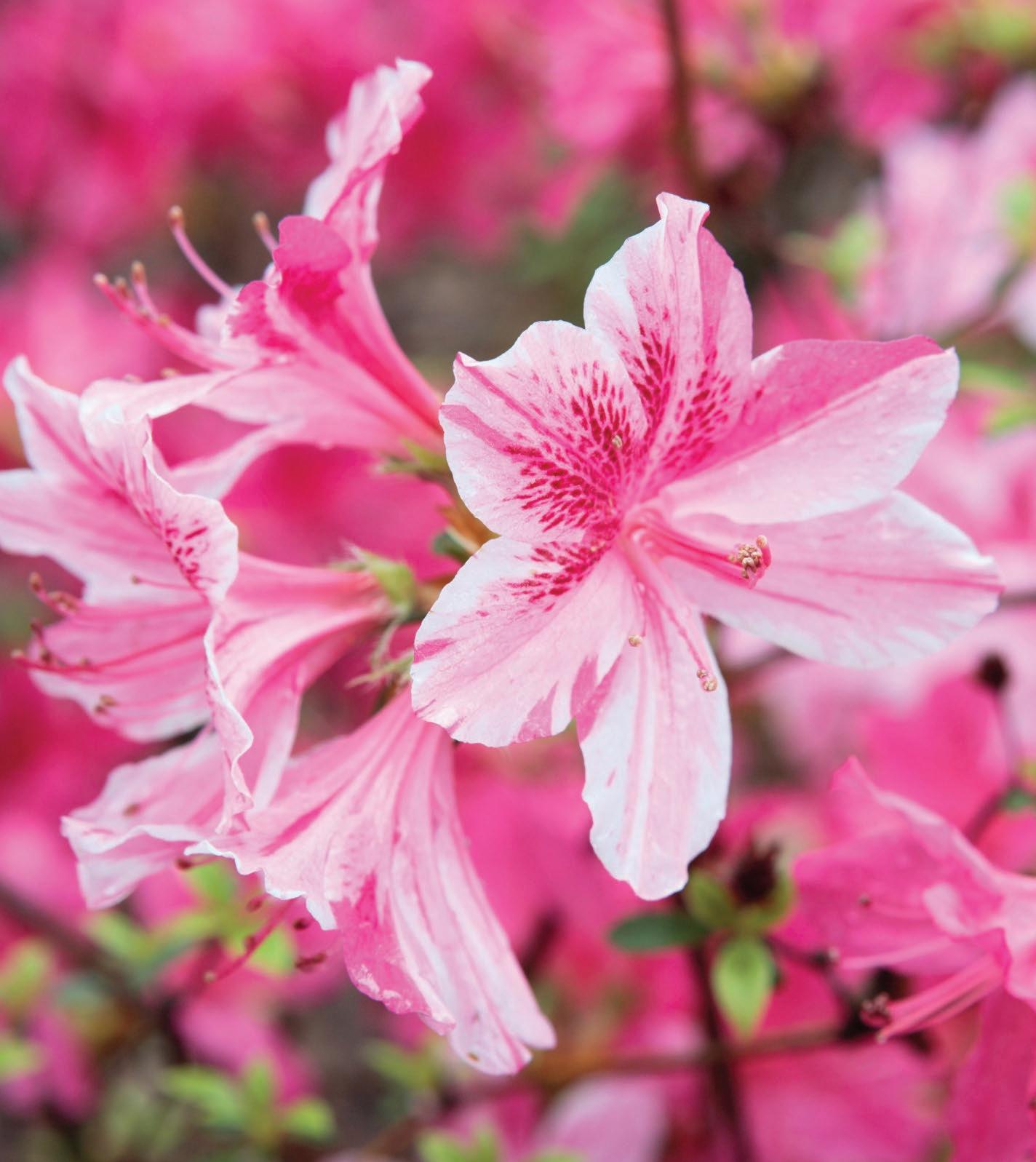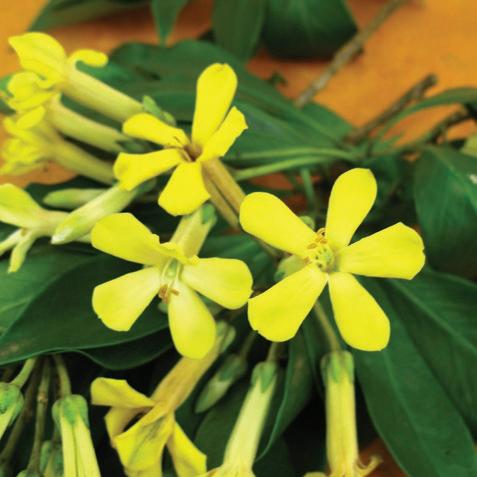
4 minute read
azaleas, lavender
spring planting and care guide
Look out for azalea lace bug.
This sap sucker, its responsible for the silvering of the leaves on most varieties of azaleas. Treat promptly with Searles Conguard.




There are many types of azaleas suited to a range of lighting conditions from full sun positions to shaded areas. This gives an excellent range of azaleas to choose from to suit almost any area of your garden.
Enquire at your local garden centre for the best azalea varieties suited to a specific position in your garden.
When planting azaleas, remember that they love an acidic soil, rich in organic matter. Improve the soil by planting into Searles Azalea & Camellia Specialty Mix. This will give your azaleas the right mix of nutrients and pH for a great start and strong, healthy growth.
Water them regularly, avoiding the petals which can result in petal blight. Feed them with Searles Flourish
Azalea & Camellia Fertiliser, which gently acidifies the soil, provides essential iron and promotes strong growth and brilliant flowering.
Lavender has enjoyed universal and enduring popularity in Australian home gardens and the reasons are quite clear. They are hardy and resistant to disease as well as being stylish — suiting most garden or landscape styles, regardless of fashions or trends.
Lavender needs full sun to grow and flower well. Without at least 6 hours of direct sun (preferably afternoon sun) every day, flowering will be poor. Lavender traditionally comes from a dry, Mediterranean climate and dislikes humidity. If you live in a warm or cool temperate climate you should be able to grow most lavenders. However, some modern hybrids have an increased resistance to humidity and can even be grown in the tropics if the right conditions are given such as excellent drainage, free air circulation and full sun. In warm climates choose varieties from the Italian and Spanish family. French lavender is by far the best for warmer climates.
Lavender dislikes long periods of heavy rain but can survive if it has proper drainage. Lavender is a great choice in seaside gardens as it tolerates windy conditions, sandy soils and some salt spray. It also has excellent resistance to dry spells and frost.

> Now is the time to fertilise native plants, but only use fertilisers specifically designed for natives, such as Searles Native Plant Food. Native plant foods are low in phosphorus, which is ideal for plants such as grevilleas, callistemons and banksias.
> The sudden fl ush of Jasmine polyanthum fl owers signals spring has arrived. Plant one in a sunny spot with room to ramble and enjoy the sweet fragrance as you walk outside your house every morning.
> By now, Clivias will be on full display in all parts of Australia. Their hardy nature, all year thick strappy foliage, and when spring arrives clumps of bright blooms sitting erect from the leaves make them a stand out.

> Perfect time to re-pot cymbidiums. Use Searles Cymbidium & Bromeliad Mix for the right soil media for healthy growth.
Although each daylily fl ower only lasts a day, it is usually replaced by another on the same stem the following day. Daylilies benefi t from being kept moist and well fed, so mulch well and use Searles Flourish to boost blooms. Plant in full sun. Daylilies grow happily in dry, well-drained or boggy soils. They cope with drought, frost, windy and seaside conditions and have little trouble with pests and disease.
ornamental peac h
> Prune hibiscus in early September and fertilise with Searles Hibiscus & Bougainvillea Plant Food. If you live in the tropics or subtropics, beware of hibiscus beetle in flower buds and hibiscus mite (which appears as wartlike galls on the leaves). If you see evidence of these pests, spray them with Searles Conguard.

> Scented beauties for spring time scent; Port Wine Magnolia, Rondeltia amoena, lavender, daphne & native frangipani.

> Jacarandas, Silky Oaks, Tabebuias, Illawarra Flame Tree, Prunus (ornamental cherry) and Malus (apples) are flowering now.

> Cyclamen are the perfect plants for indoors or shady areas in Winter. They have a long, continuous fl owering period — usually from May until October. Cyclamen aren’t fussy. Even though cyclamen grow fantastically indoors, they love the cold; it seems to refresh and revitalise them. Every few days give your cyclamen a drink and put them outside for the night. They will appreciate the cold, frosty night more than us! Never let your cyclamen sit in a saucer of water permanently — this will cause a yellowing of the leaves, rotting of the stems, and eventual death of the plant. Cyclamen appreciate a feed with a liquid fertiliser. If done fortnightly with Searles Flourish Liquid Fertiliser, cyclamen should continuously bloom until mid-Spring.
native frangipani











